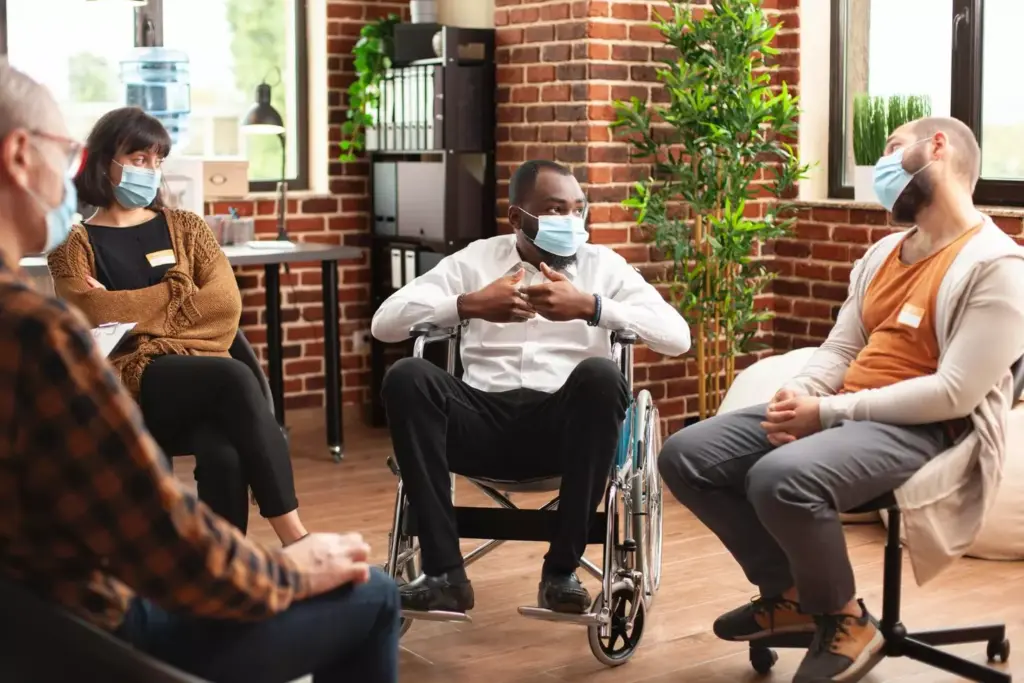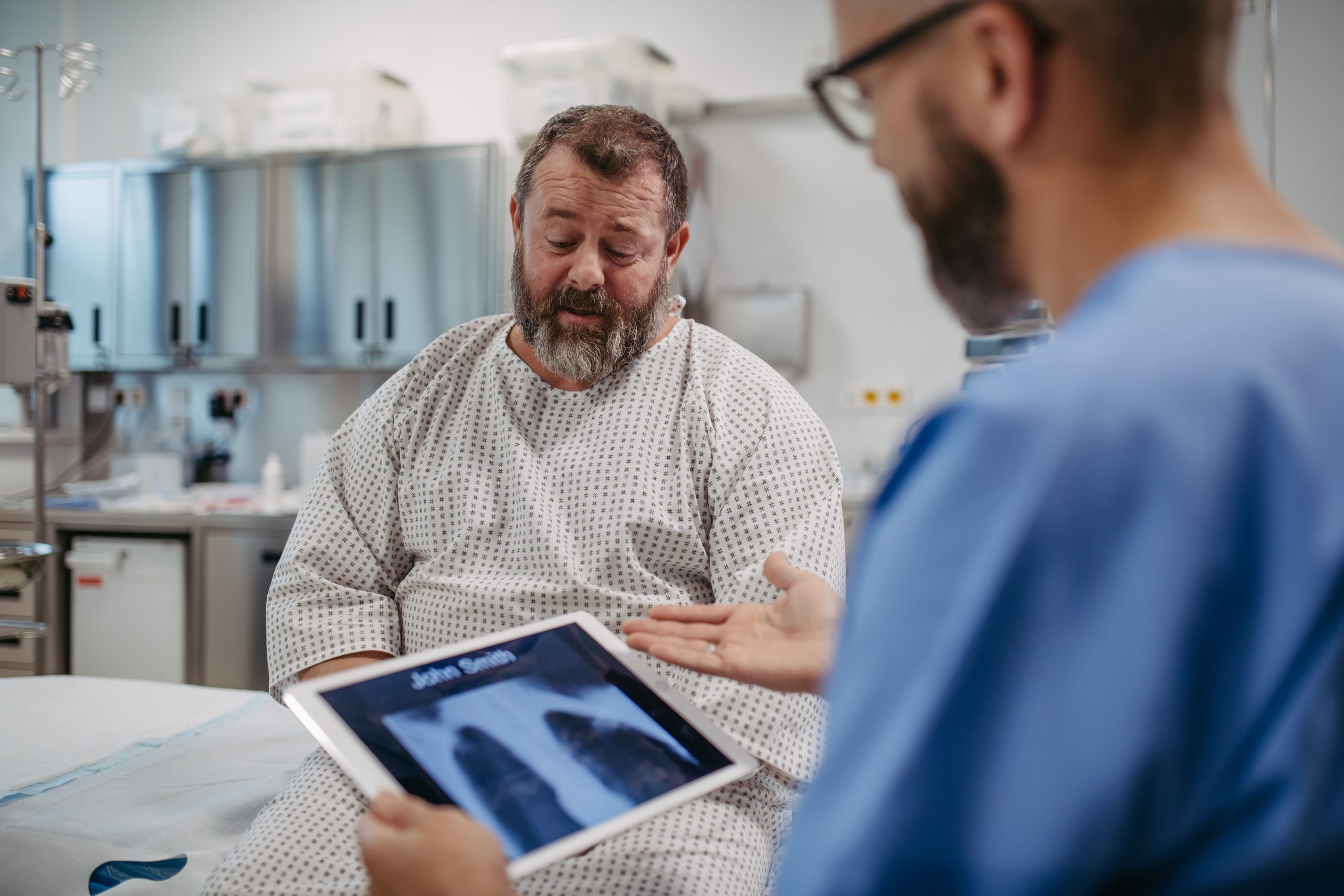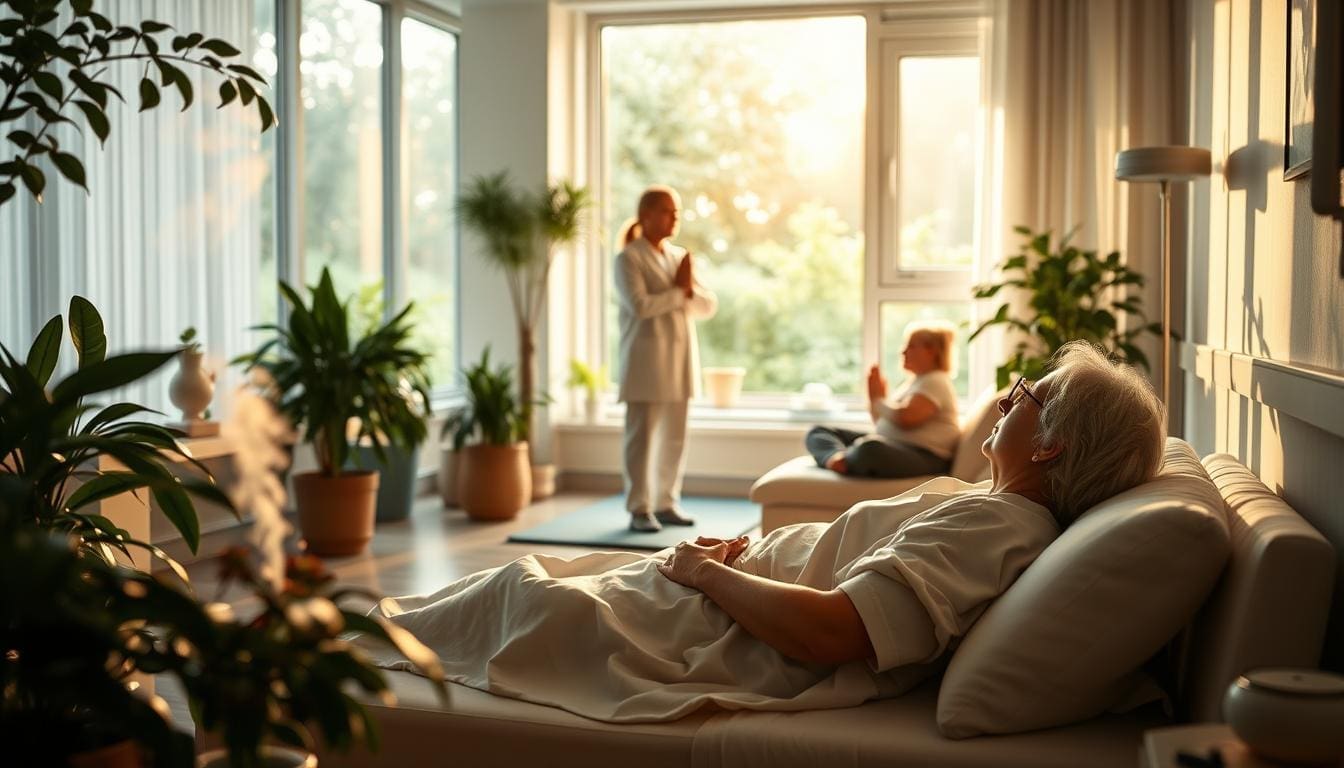Last Updated on November 27, 2025 by Bilal Hasdemir

At Liv Hospital, we understand the complexities of addiction and the importance of evidence-based treatments. With millions of lives affected, finding effective solutions is more critical than ever.
We are committed to providing patient-centered care that uses the latest science-backed approaches. Our team will look at various treatments for drug addiction. We will highlight the most effective methods and programs.
Recent studies in Cureus show that a complete approach to addiction treatment is key. We will dive into the most promising treatments. This will give insights into the world of addiction recovery.
Key Takeaways
- Evidence-based treatments are key for effective addiction recovery.
- Liv Hospital‘s patient-centered approach supports lasting recovery.
- Many rehab programs are available, each with unique benefits.
- Understanding relapse statistics can help in making treatment decisions.
- Science-backed approaches are essential for successful addiction treatment.
The Science Behind Modern Rehab Drug Addiction Programs
Modern rehab drug addiction programs are changing how we treat substance recovery. They use evidence-based methods to create a detailed treatment plan. This plan meets the complex needs of those fighting addiction.
Evidence-Based Approaches Transforming Recovery
These programs rely on scientific research for their methods. They use medication-assisted treatment (MAT) and cognitive-behavioral therapy (CBT). Studies show that mixing MAT with counseling boosts recovery by tackling both physical and mental addiction aspects.
A study in Cureus highlights the importance of evidence-based treatments. They help manage withdrawal symptoms, reduce cravings, and prevent relapse. Healthcare providers can tailor treatments to fit each patient’s needs, improving recovery chances.
Understanding Addiction as a Treatable Condition
Seeing addiction as a treatable condition is key to effective treatment. It’s viewed as a chronic disease that changes the brain, leading to compulsive substance use. Recognizing it as a medical issue, not a moral failing, helps us treat it with compassion and evidence-based methods.
This view leads to personalized, multi-faceted treatment plans. It shows the need for ongoing support and care. Managing addiction is a long-term effort that requires constant attention and support.
Medication-Assisted Treatment (MAT) for Substance Dependence
Medication-Assisted Treatment (MAT) is key in fighting substance dependence. It mixes FDA-approved meds with counseling and therapy. This combo meets the complex needs of those battling addiction.
FDA-Approved Medications for Different Substances
MAT uses special meds for each substance. For opioids, methadone, buprenorphine, and naltrexone are used. For nicotine, bupropion and varenicline are the go-to choices.
It’s vital to have many treatment options. The right medication depends on the substance, how severe the addiction is, and the patient’s health history.
Integration with Counseling for Optimal Results
MAT works best with counseling and therapy. This mix tackles addiction’s physical and mental sides. It helps patients stay on the path to recovery.
Counseling can be one-on-one, in groups, or with family. It helps patients grasp their addiction, learn coping skills, and improve social interactions.
Success Rates and Long-Term Outcomes
Research shows MAT with counseling boosts success rates. Patients stick with treatment longer and recover better than those without meds.
| Treatment Outcome | MAT with Counseling | Counseling Only |
|---|---|---|
| Retention in Treatment | 70% | 40% |
| Relapse Rate | 30% | 60% |
| Employment Rate | 60% | 30% |
MAT is a hopeful solution for managing substance dependence. It supports long-term recovery when part of a full treatment plan.
Therapeutic Interventions: CBT and Beyond
Therapeutic interventions are key in rehab drug addiction programs. They offer different ways to help people recover for good. These methods are made to meet the complex needs of those fighting addiction, giving them the tools and strategies for success.
Cognitive Behavioral Therapy Frameworks
Cognitive Behavioral Therapy (CBT) is a common approach in rehab programs. It helps people change negative thoughts and behaviors that lead to addiction. CBT helps individuals understand their addiction, learn coping strategies, and improve their mental health.
Research shows CBT is very effective against substance use disorders. A study in Cureus found CBT can greatly lower relapse risk. It teaches people how to handle cravings and avoid triggers.
Motivational Interviewing Techniques
Motivational Interviewing (MI) is another powerful method used in rehab. MI aims to boost a person’s motivation to change, helping them overcome doubts and start their recovery journey.
MI is a conversation between the therapist and the individual. It uses open-ended questions, listening, and summarizing to build trust and encourage positive change.
Dialectical Behavior Therapy Applications
Dialectical Behavior Therapy (DBT) combines CBT with mindfulness. It’s great for those who struggle with strong emotions and self-destructive actions.
In rehab programs, DBT teaches people to manage their emotions, handle distress, and improve relationships. It focuses on four main areas: mindfulness, distress tolerance, emotional regulation, and interpersonal skills.
| Therapeutic Intervention | Key Components | Benefits |
|---|---|---|
| Cognitive Behavioral Therapy (CBT) | Identifying negative thought patterns, developing coping strategies | Reduces relapse risk, improves mental health |
| Motivational Interviewing (MI) | Enhancing motivation, resolving ambivalence | Increases engagement in recovery, promotes positive change |
| Dialectical Behavior Therapy (DBT) | Mindfulness, distress tolerance, emotional regulation | Improves emotional management, reduces self-destructive behaviors |
By adding CBT, MI, and DBT to rehab programs, people get care that fits their needs. This mix of therapies creates a strong plan for lasting recovery.
Residential Treatment Programs: Immersive Recovery
Residential treatment programs offer a deep dive into recovery. They help those struggling with substance dependence. These programs are designed to meet the complex needs of those with addiction. They provide a structured environment for recovery and personal growth.
Structure and Components of Inpatient Care
Inpatient care is key in residential treatment programs. It offers a supportive and controlled setting for recovery. It includes individual and group therapy sessions, medication management, and educational workshops.
These elements help individuals understand and manage their addiction. They also develop coping skills and build a support network. Research in Cureus shows that this approach is effective in addressing addiction’s physical, emotional, and psychological aspects.
Therapeutic Communities and Their Benefits
Therapeutic communities are a vital part of many residential treatment programs. They offer a supportive environment for sharing experiences and learning from others. The benefits include increased motivation, improved coping skills, and enhanced social connections.
“The sense of community and support provided by residential treatment programs is invaluable. It helps individuals stay on track with their recovery and provides a safe space to share their experiences.”
Determining Appropriate Length of Stay
Finding the right length of stay in a residential treatment program is important. It depends on individual needs and circumstances. Factors include the severity of addiction, presence of co-occurring disorders, and treatment progress.
Research shows that longer stays often lead to better outcomes. A study in Cureus notes that “longer treatment durations are associated with improved outcomes in terms of reduced substance use and improved psychological functioning.”
Understanding residential treatment programs, therapeutic communities, and the factors affecting length of stay helps individuals make informed decisions. This can lead to lasting recovery.
Outpatient Recovery Options for Flexible Treatment
Outpatient treatment programs are key in recovery. They let people get help while staying at home. Everyone’s recovery path is different. Our outpatient programs are flexible and effective for treating substance dependence.
Standard Outpatient vs. Intensive Outpatient Programs
Outpatient programs vary in intensity. Standard programs have regular counseling. Intensive outpatient programs (IOPs) offer more, like group therapy and educational sessions.
Key differences between standard and intensive outpatient programs:
| Program Aspect | Standard Outpatient | Intensive Outpatient |
|---|---|---|
| Session Frequency | Less frequent, often once a week | More frequent, often 3-4 times a week |
| Session Structure | Typically individual counseling | Group therapy and educational sessions |
| Level of Support | Lower intensity | Higher intensity, more supportive |
Partial Hospitalization Programs
Partial hospitalization programs (PHPs) are a middle ground between inpatient and outpatient care. They provide a structured setting with therapy and medication management without overnight stays.
Benefits of PHPs include:
- Intensive therapy and support
- Flexibility to return home in the evenings
- Preparation for transition to outpatient care
Maintaining Recovery While Living at Home
Staying in recovery at home needs commitment and the right support. It’s important to have a routine. This should include therapy, support groups, and healthy choices.
Using these outpatient recovery options and tips, people can successfully recover. They get the flexibility that outpatient programs offer.
Family and Peer Support Systems in Recovery
Family and peer support are key in recovery, helping people stay sober for good. Recovery is a complex journey. It needs medical care, therapy, and strong support systems.
Family Therapy and Educational Interventions
Family therapy is vital in recovery. It teaches family members about addiction and improves communication. It also tackles issues that might lead to substance use.
Family therapy sessions help fix relationships hurt by addiction. They create a supportive space for those recovering.
Family education teaches about addiction as a disease. It shows how to spot relapse signs and support recovery. Informed families can motivate and encourage their loved ones.
Peer Recovery Support Services
Peer recovery support is essential. It connects people in recovery with others who’ve faced similar struggles. Peer support groups are safe spaces for sharing and learning.
Peer support comes in many forms, like groups, online forums, and mentorship. It keeps people connected to their recovery community. This reduces isolation and boosts success chances.
Building a Sustainable Support Network
Creating a lasting support network is key. It includes family, peers, and professional help. A good network has therapists, support group leaders, and addiction specialists.
| Support System | Description | Benefits |
|---|---|---|
| Family Therapy | Educates family members about addiction and improves family dynamics | Repairs relationships, provides a supportive environment |
| Peer Support Groups | Connects individuals with others in recovery | Reduces isolation, provides community and understanding |
| Professional Support | Includes therapists, support group facilitators, and healthcare providers | Offers guidance, treatment, and ongoing support |
Combining these elements creates a strong support network. It meets individual needs, boosting recovery chances.
Understanding Relapse as Part of Recovery
It’s key to grasp what relapse is to make good recovery plans. Relapse is a big hurdle many hit on their way to getting better.
Relapse Statistics and What They Really Mean
Research shows relapse rates for drug addiction are like those for chronic diseases like diabetes. The Cureus sources say knowing this helps set the right goals for recovery.
Some important facts are:
- 40% to 60% of people face relapse, showing the need for constant support.
- Relapse is more common in the first year, making early help vital.
Identifying Personal Triggers and Warning Signs
Finding out what triggers you is key to avoiding relapse. Triggers can be feelings, places, or people. Common ones include:
- Stress and anxiety
- Being around people who use drugs
- Certain places or situations
Knowing these triggers lets you plan how to deal with them.
Effective Relapse Prevention Strategies
Good relapse prevention mixes strategies based on the person’s needs. Some good methods are:
- Cognitive Behavioral Therapy (CBT): Changes negative thinking patterns.
- Medication-Assisted Treatment (MAT): Helps with withdrawal and cravings.
- Support Groups: Offers a community that gets what recovery is like.
By understanding relapse and using these strategies, people can make their recovery stronger and get sober for good.
Emerging Innovations in Drug Treatment Methods
New technologies and treatments are changing how we fight addiction. As science moves forward, we’re finding new ways to help those with drug addiction. These new methods aim to meet the complex needs of those struggling.
Neuromodulation Techniques
Techniques like Transcranial Magnetic Stimulation (TMS) are showing great promise. TMS uses magnetic fields to activate brain areas linked to addiction. This could help lower cravings and boost treatment success.
A study in the Cureus journal found TMS might help with addiction symptoms. It targets brain areas to change the neural circuits that drive addiction.
GLP-1 Agonists and New Pharmacological Approaches
GLP-1 agonists, made for type 2 diabetes, might also treat addiction. Early research shows they could cut cravings and improve health in those recovering from addiction.
| Medication | Primary Use | Potential in Addiction Treatment |
|---|---|---|
| GLP-1 Agonists | Type 2 Diabetes Management | Reducing cravings and improving metabolic health |
| TMS | Depression Treatment | Modulating neural circuits associated with addiction |
| Digital Therapeutics | Various Health Conditions | Providing virtual support and monitoring |
Digital Therapeutics and Virtual Recovery Support
Digital tools and virtual support are key in addiction care. They offer personalized help and monitoring. This helps people stay on track with their recovery.
Key benefits of digital therapeutics include:
- Personalized treatment plans
- Real-time monitoring and support
- Accessibility and convenience
- Data-driven insights for improved care
By using these new tools, healthcare can give more tailored care. This helps those with drug addiction get better help.
Conclusion: Personalizing Your Path to Lasting Recovery
Recovering from drug addiction needs a plan that fits you. We’ve talked about different treatments and strategies. These include medication, therapy, and various programs. Each person’s path to recovery is different.
Creating a successful recovery plan means working with healthcare experts. They help make a plan that meets your needs. Combining treatments with support from family and friends can help you stay sober.
Understanding addiction and the treatments available helps us support recovery better. Our aim is to offer a caring and effective approach. This way, people can get through drug rehab and stay sober for good.
FAQ
What is Medication-Assisted Treatment (MAT) and how does it work?
Medication-Assisted Treatment (MAT) combines medicines with counseling and therapy. It helps manage withdrawal symptoms and cravings. This approach supports long-term recovery.
What are the benefits of Cognitive Behavioral Therapy (CBT) in addiction treatment?
Cognitive Behavioral Therapy (CBT) helps change negative thoughts and behaviors linked to addiction. It teaches coping skills and improves mental health.
How do residential treatment programs support recovery?
Residential programs offer a focused environment for recovery. They provide various therapies and support. This helps develop skills for long-term recovery.
What are the differences between standard outpatient and intensive outpatient programs?
Standard outpatient programs offer flexible support. Intensive programs provide more structured care. We tailor our programs to meet individual needs.
How can family and peer support systems aid in recovery?
Family and peer support are key in recovery. They offer emotional support and a sense of community. We encourage family therapy and education to support loved ones.
What are the signs of relapse and how can I prevent it?
Warning signs of relapse include increased cravings and changes in behavior. We teach coping skills and support networks to prevent relapse.
What are some emerging innovations in drug treatment methods?
New treatments include neuromodulation and digital therapeutics. These methods aim to improve treatment outcomes and access to care.
How can I create a personalized path to lasting recovery?
A personalized recovery plan involves understanding your needs. We develop tailored plans that include evidence-based approaches and support systems.
What is the role of aftercare in maintaining recovery?
Aftercare provides ongoing support and guidance. It helps ensure a smooth transition to long-term recovery. We encourage participation in aftercare programs.
How can I find the right treatment program for my needs?
Finding the right program involves considering addiction type, care level, and personal preferences. We help assess needs and explore options to find the best fit.
References
- National Institute on Drug Abuse (NIDA). (2025). Reflecting on NIDA’s 50th Year and Looking to 2025. Retrieved from https://nida.nih.gov/about-nida/noras-blog/2025/01/reflecting-nidas-50th-year-looking-to-2025








